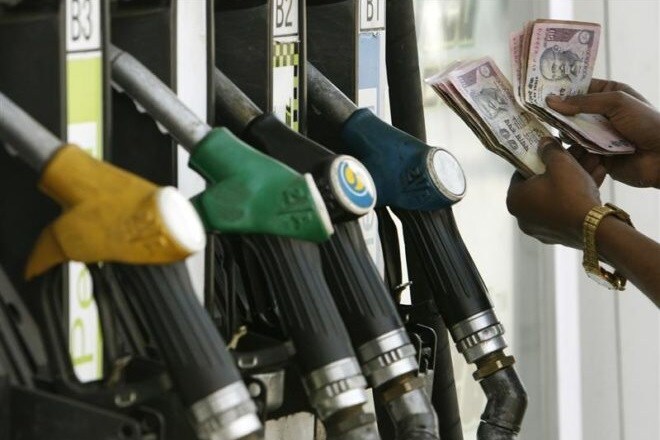Last week, FE Online wrote how petrol price has risen by as much as Rs 5.42 per litre in less than two months (now Rs 5.63 in exact two months), after initially falling post the implementation of daily fuel price revision across the country. A major contribution to this hike in the retail price of petrol is the recent support that the global crude oil price has found from the sustained supply cuts by OPEC.
Today, we leave you with a new figure which could have you thinking: “Where is my money going?” The price of crude oil, the main raw material from which petrol is extracted, has fallen by as much as two-thirds in the last nine years, but the retail price of petrol has risen by a half during the same period.
The Indian basket of crude oil was at $132.47 per barrel at its peak in July 2008, according to the data from Petroleum Planning and Analysis Cell. Since then, the price has fallen by 65% to $46.56 per barrel in June 2017. At the same time, the price of retail petrol sold in Mumbai rose by 43% from Rs 55.04 in June 2008 to Rs 78.44 in June 2017. Albeit, the price of petrol fell sharply after that, before beginning to rise again to similar levels as present.
Freeing up
The price of petrol was under the government control when the crude oil was at its peak. Biting the bullet, the government deregulated the price of the fuel from its control in 2010, allowing the oil refining and marketing companies to set it in line with the market dynamics, specially crude oil prices. Following that, the price of petrol rose in line with the rise in crude oil prices till the early 2013.

However, the crude oil prices began falling after that, but the petrol prices either kept increasing, or kept steady in spells. And now petrol still trades firm, while crude oil price is under a huge pressure. Not to mention the support to oil downstream companies from a firm rupee, which is up 6.3% so far this year, resulting in lower expenses for them per dollar spent on buying crude oil.
Earlier this year, the government introduced dynamic fuel pricing on June 16 — a mechanism for revising retail fuel prices daily across the nation in conjunction with the change in the crude oil prices. Narendra Modi administration’s scheme ensured that the oil marketing companies do not feel the pinch of keeping fuel prices static for up to 15 days even if the crude oil starts rising rapidly, as was the earlier practice.
Dynamic move
Immediate price cuts followed. Petrol prices fell by Rs 3.45 per litre in just a span of 13 days, with the oil companies cutting prices or keeping it unchanged for 12 days in a row. Then, it started rising, beginning with a humble 1 paisa per litre hike on June 28-29 — an amount not worth batting an eyelid. Petrol price has been on the upmove since then, with the oil companies continuously raising it in small doses everyday, barring a few even smaller cuts in between. Since June 28, petrol price in Delhi has risen by Rs 5.63 per litre to Rs 69.09 per litre as on Monday, 28 August 2017 (Read full story).
As FE Online wrote earlier, crude oil price is not the only factor affecting the retail fuel prices. Read here what all goes into pricing the increase or decrease in the petrol and diesel prices. Of course, a big part — more than half of the price that you pay for petrol and diesel — consists of various centre and state taxes, which remain there even after the implementation of GST, as the two commodities were kept out of the ambit of the most radical tax reform that India has ever seen since independence.


